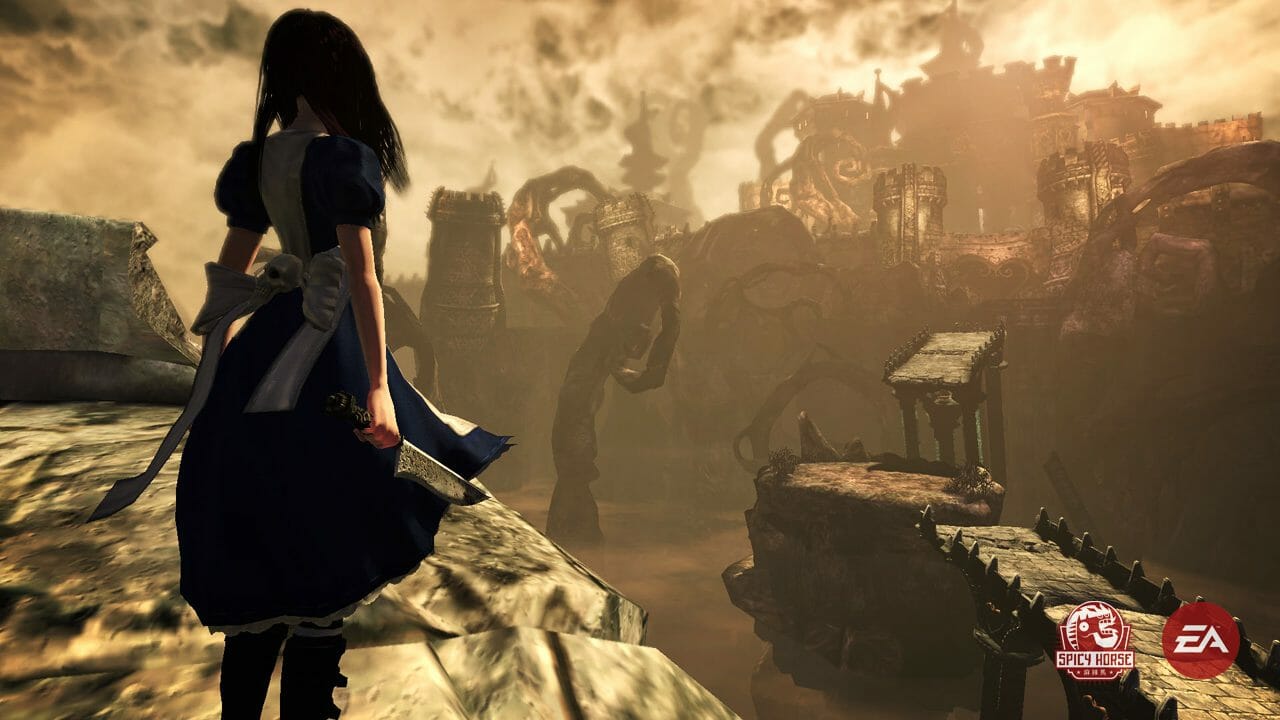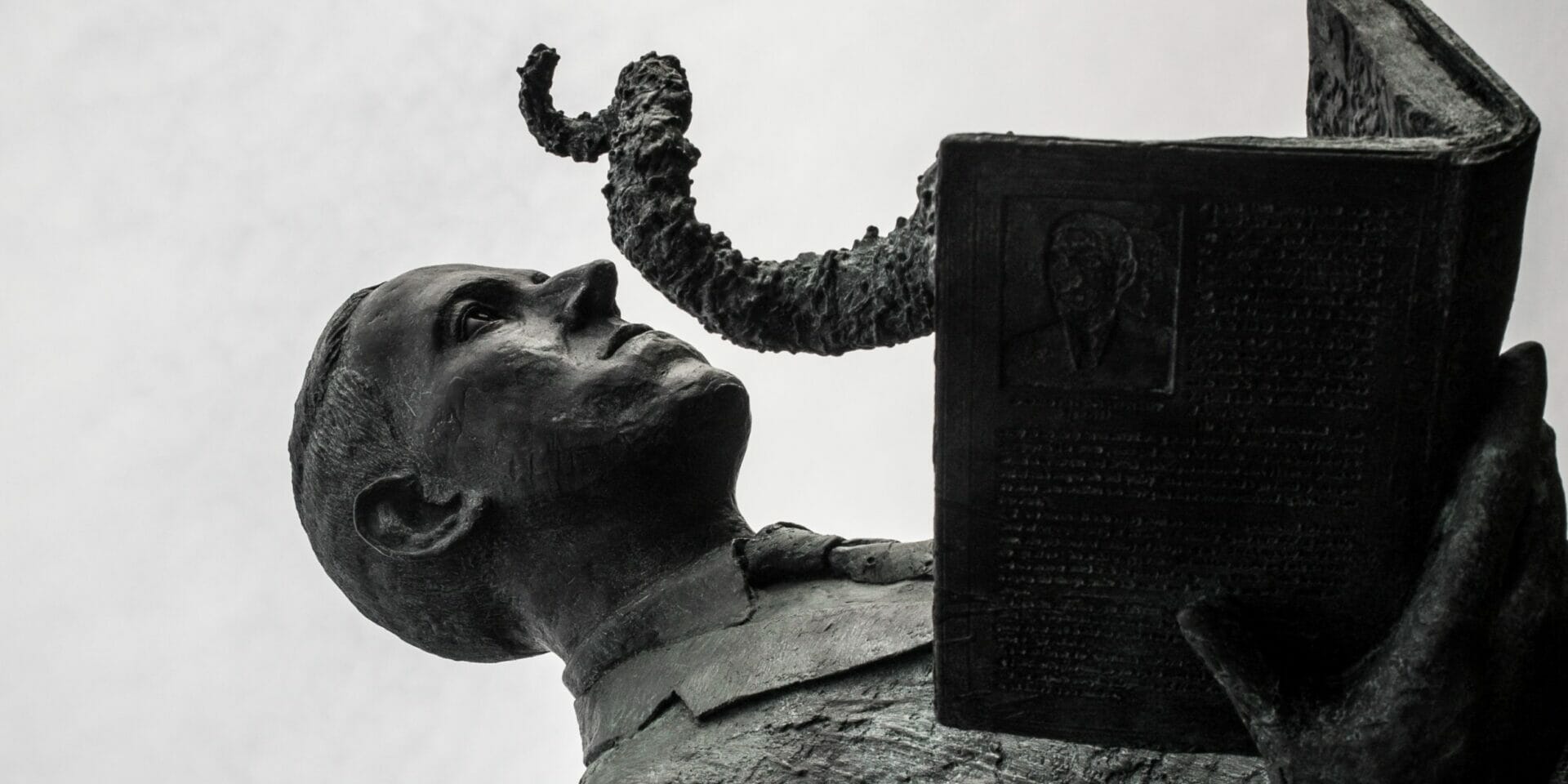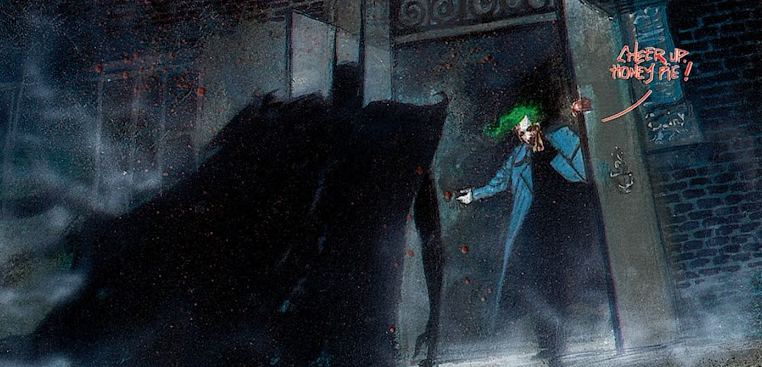
Arkham Asylum | The human mind is A Serious House on Serious Earth
Year
Format
By
“We’re all mad here. I’m mad. You’re mad.”
“How do you know I’m mad?” said Alice.
“You must be,” said the Cat, “or you wouldn’t have come here.”
Alice’s Adventures in Wonderland, by Lewis Carroll
Batman probably shared the Cat’s thoughts when he set foot in Arkham Asylum, the Lovecraftian place where he sends most of his criminal enemies. The Arkham Asylum is not just a psychiatric facility, it’s also a gateway to the human and super-human psyche. Its corridors are the branches of consciousness and its rooms are the darkness of one’s mind. Even Batman feels like he’s lost, once he enters the institution.
Arkham Asylum: A Serious House on Serious Earth is a graphic novel written by Grant Morrison and drawn by Dave McKean. First published in 1989 by DC Comics, with its almost expressionist style and claustrophobic atmospheres, Arkham Asylum is a disturbing journey which inevitably changes whoever undergoes it.
Down the Rabbit hole
In Arkham Asylum the police calls Batman because the Joker and other inmates have taken over Arkham, taking hostage the doctors and nurses. The Joker’s request is that only Batman enter the asylum. Once in place, the criminal gives him an hour to be able to escape. In doing so, he will have to dive through the Asylum’s patients and the traumas they represent. The Joker guides Batman during this trial, like a distorted version of the Virgil-Dante couple from the Divine Comedy. But they don’t travel toward salvation. Quite the opposite, like many times before, the Joker wants to prove Batman isn’t so different from his enemies. A solid belief of the superhero that, in Arkham Asylum, seems severely shaken.
I’m afraid the Joker may be right about me. Sometimes I… question the rationality of my actions.
Batman in Arkham Asylum
This time, Batman seems almost frightened, afraid of what he could find wandering inside the Asylum. Mostly, he fears coming face to face with his past emotional traumas. He’s afraid that he could find out he’s no less crazy than the villains he meets there. Diving into complex and harsh themes, Arkham Asylum finds its place among other works of the Dark Age of comics, such as The Killing Joke, The Dark Knight Returns or Kraven’s Last Hunt.
Villains as allegories
Each villain Batman encounters represents an aspect of his psyche: godhood and humanity, guilt and innocence, madness and rationality. The author plays with the main characteristics of each villain, making them full of allegorical meanings while they challenge Batman on his inner conflicts.
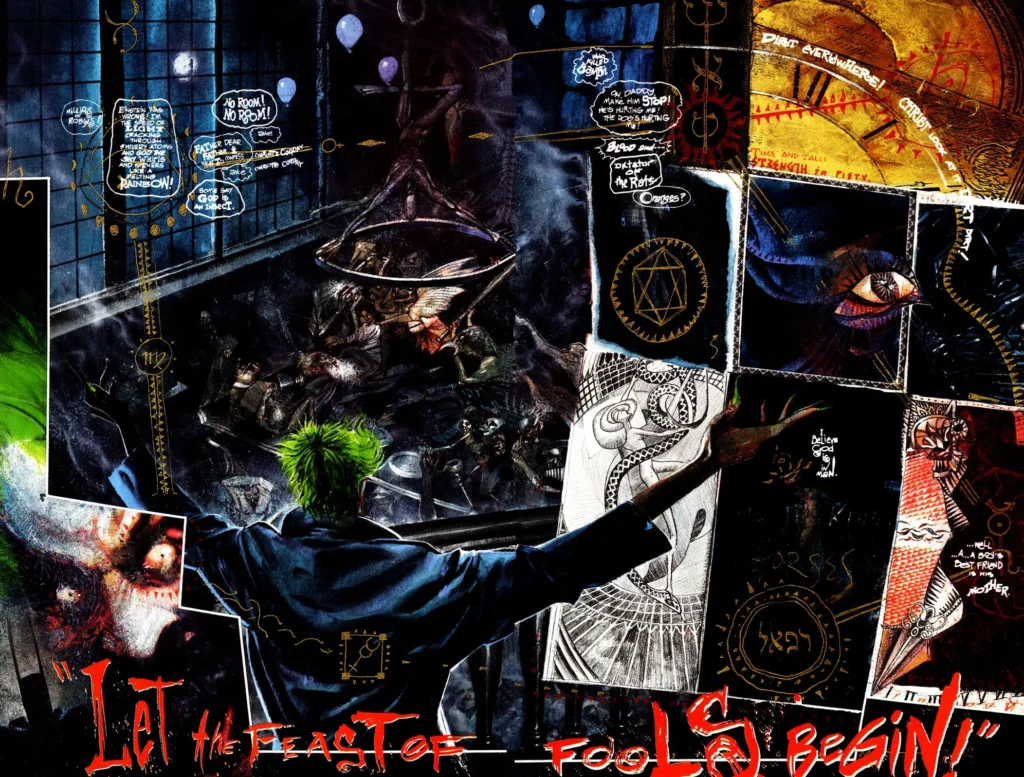
The Joker, for example, is like a ghost, omnipresent but evanescent. Even his playful side is highlighted, but in an adult way, with jokes related to sexuality. His entire personality is presented under a new interpretation. Joker isn’t simply mad: he’s so clear-headed that he changes according to circumstances, just to fit the world around him.
As Grant Morrison himself told IGN:
My Joker, bent and whipped like a sapling in a breeze, was a damaged human being reacting to every shift in the zeitgeist, every change in the weather, by constructing a new personality in response. This made him a man of a million false fronts – as he was described by Bill Finger in a very early story. Rolling with the flow made him unstable, prone to revision at the drop of a purple hat, but true to decades of stories.
A Serious House on Serious Earth
The full title of Arkham Asylum includes the phrase A Serious Place on Serious Heart. It takes its cue from Philip Larkin‘s poem Church Going. In the poem, the narrator ventures into a church undertaking a spiritual journey in each room he passes through. This sets the tone of the graphic novel and suggests that there’s also a reference to Christianity.
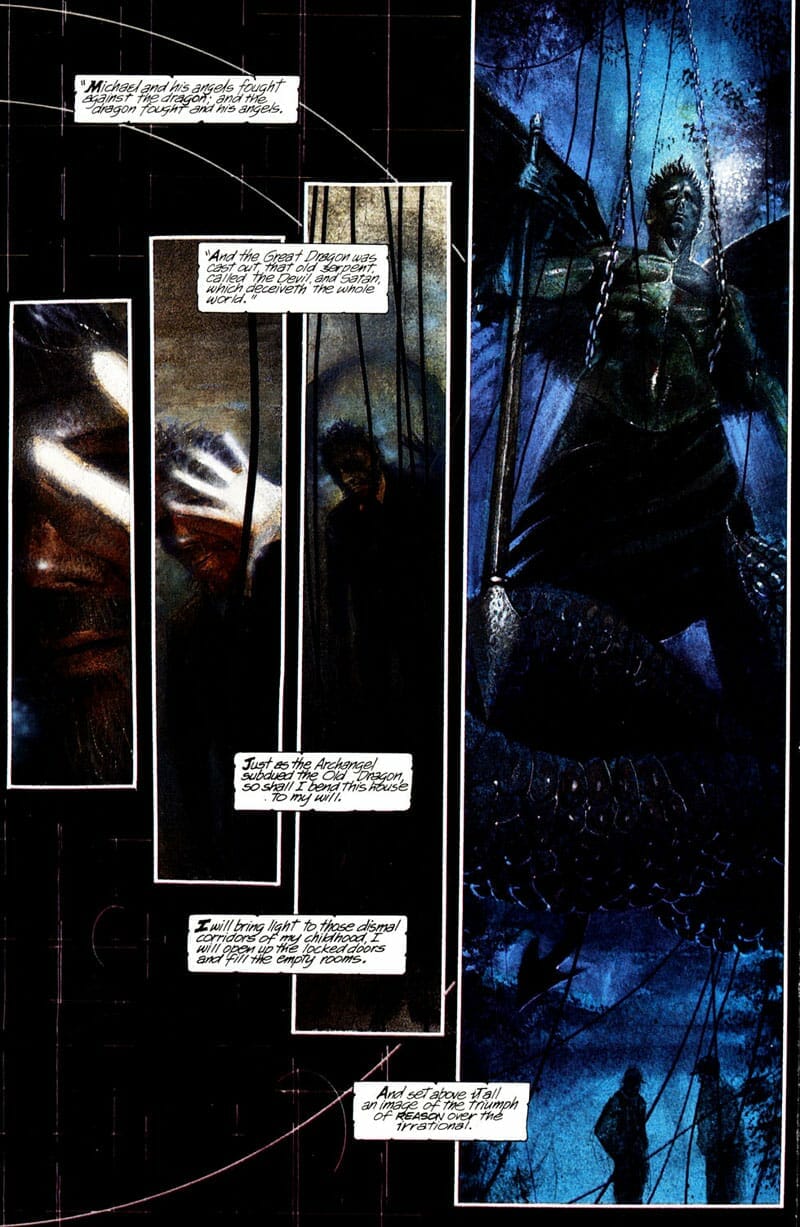
Morrison’s work’s full of heavy symbolism. For example, in introducing Killer Croc, the author also shows Archangel Michael killing a snake with a spear. Batman himself is presented, at one point, as Christ: loved by many and hated by just as many. There are also references from psychology, like the use of archetypes from Jung‘s studies, for example with the figure of the dragon/snake. In his The Relations Between the Ego and the Unconscious, Jung explains how the dragon is a maternal symbol, so, for those most accustomed to his theories, one can already guess from here where Batman’s main trauma lies.
Alice’s Adventures in Wonderland is part of the references too. Carroll’s novel after all revolves around the concept of madness, even if it’s through Alice’s childish eyes. The sexual theme is emphasized as well. Carroll was rumored to have a predilection for little girls, and in Arkham Asylum, at first, the Joker suggests that Batman and Robin are in a relationship, and subsequently the Mad Hatter himself is presented as a pedophile, as if to suggest, erroneously, that Batman could be going down that road too.
Morrison also used an additional means of expression: tarot cards. Already imbued par excellence with symbolism, through their illustrations the author explains Batman’s inner journey, adding an almost magical vision to the entire story. They’re used as an accompaniment to plot turn points, as well as to highlight the various aspects of the character’s psyche.
Two parallel stories
As Batman faces his demons, the author tells also another story: the life of Amadeus Arkham, the founder of the Asylum. His mentally ill mother was always present in his life, so much so that he decided to found the clinic to help people like her. Amadeus’ path too is tied to mental illness, illness which peaks when his mother takes her own life. In this way, both Batman and Arkham have to fight mental illness throughout their whole life.
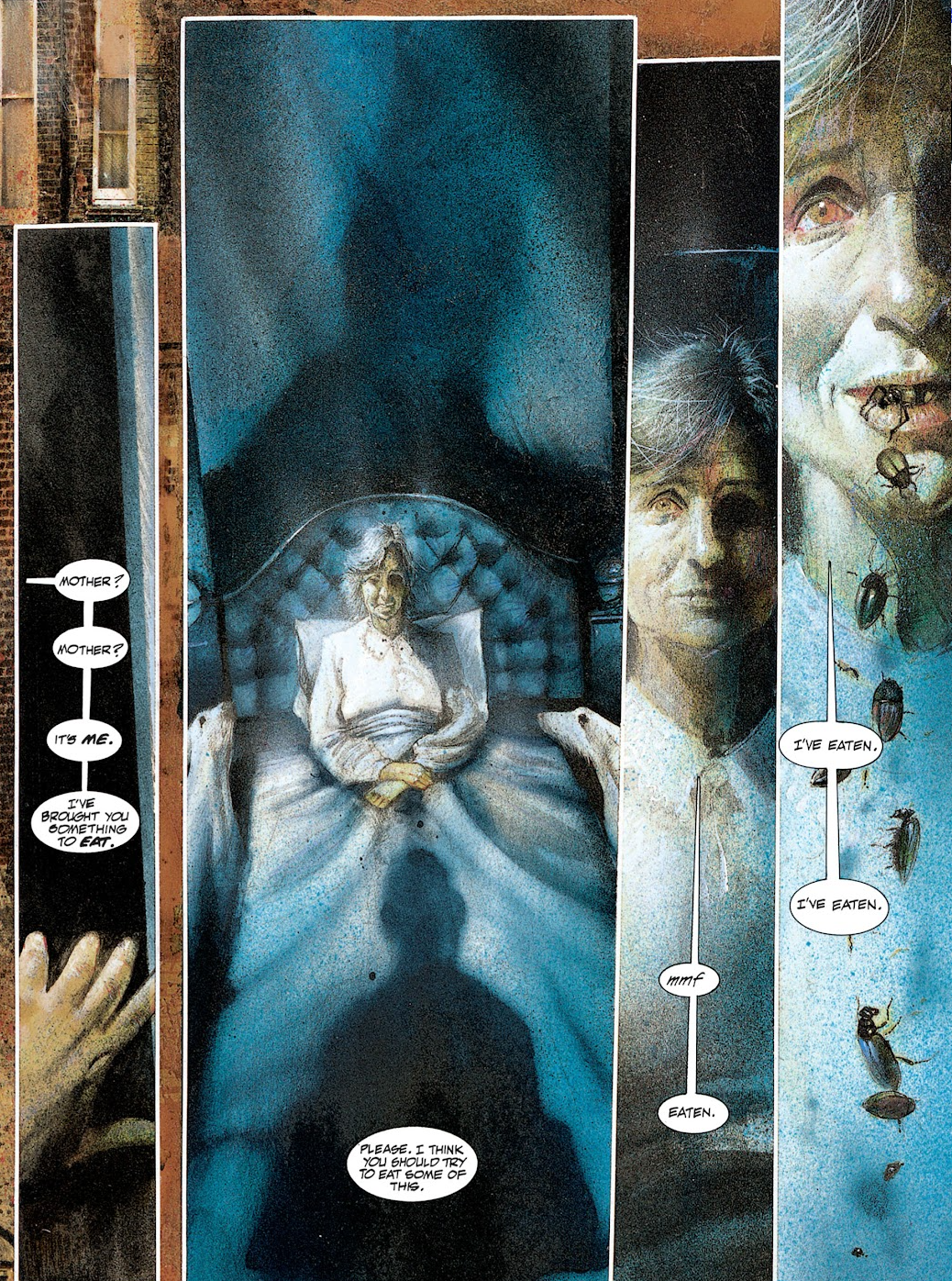
SPOILER ALERT!
The two are also linked by another factor, the trauma of their mothers’ deaths, but they deal with it in very different ways. It turns out eventually that Amadeus’ mother didn’t kill herself: it was Arkham who killed her instead. The founder of the Asylum didn’t manage to overcome madness, because he couldn’t handle the trauma that shocked his life. In contrast to him, Batman ends up choosing another path. Bruce Wayne irrationally feels guilty for his mother’s murder, even if he’s just a victim. He thinks he should have protected her but he failed. As for Amadeus, the consequence of the state of his psyche seems to be insanity. But Batman, on the contrary, faces it and even accepts it as a possible part of his personality. In this way, he frees himself from fears and – by extension – from his momentary imprisonment in the Arkham Asylum.
Arkham was right; sometimes it’s only madness that makes us what we are. Or destiny, perhaps.
Batman in Arkham Asylum
The art of Arkham Asylum
Already famous for designing the covers of Neil Gaiman‘s Sandman, Dave McKean uses a style made up of painting, photography, sculpture and even computer graphics. His artwork is surreal, with almost abstract illustrations in places. Darkness is omnipresent, so much so that it looks like a real character of the graphic novel. Thus Arkham Asylum falls into the horror category, with its disturbing images and deformed and sometimes roughly sketched drawings.
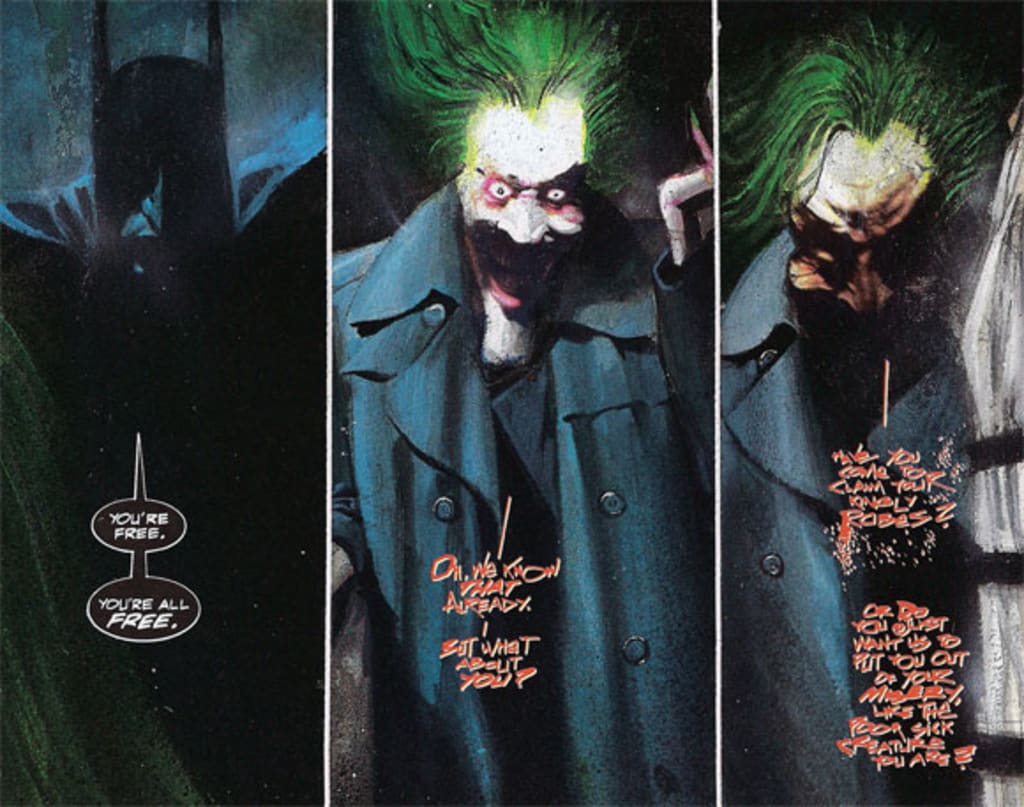
The work of Gaspar Saladino then ensures that the personality of each character also shines through the lettering. The fonts are strongly personalized and vary from character to character. A clear example is the Joker’s one. His words are bright red, messy and not even enclosed in any balloon. It is almost difficult to understand them, a feature that somehow conveys the idea of madness and the difficulty of understanding the character.
The real enemy
I’m afraid that The Joker may be right about me. Sometimes… I question the rationality of my actions. And I’m afraid that when I walk through those asylum gates… when I walk into Arkham and the doors close behind me… it’ll be just like coming home.
Batman in Arkham Asylum
The first and last panels symbolically enclose Batman’s journey. In the first, there’s an image of the moon in the night sky, while in the last the moon is represented within a tarot card. The card represents a moon between two dark towers, implying that one must go through darkness to reach the light. It’s what Batman achieved facing his traumas and the fear of madness.
The concept is similar to the one of The Killing Joke, which sees the Joker and Batman as two sides of the same coin. In Arkham Asylum, though, it’s as if madness itself was one of the characters in the story, so much so that Batman is afraid of it: he constantly fears that he could be no less mad than the people he fights. Here, Batman emerges more victorious from his self-discovery, because not only does he realize his weaknesses, but, coming out of the asylum, he overcomes them.
Batman decides to take the narrow path, even if the Joker tells him “don’t forget — if it ever gets too tough… there’s always a place for you here”, suggesting that the world outside that is the real madhouse. It’s what makes him different from those who give in to madness instead of controlling it.
Tag
Buy a ☕ for Hypercritic







